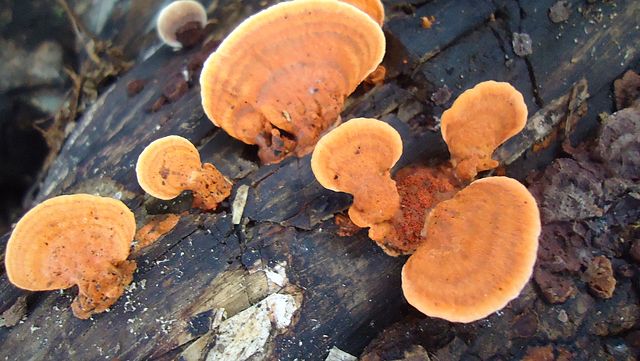
What Is The Internet Of Fungi?
Is It A Myth?
The Internet of Fungi is a popularised term for the mycorrhizal networks, meaning the fungal root networks. This is the interconnected network of fungi, their hyphae (the long branching filamentous structure of fungi), and plant roots in the soil. It was first observed in the 19th century (Frank & Trappe, 2005).
Since then, several studies have shed light on what is regarded as a symbiotic relationship between fungi and plants. The fungi live within or around the plant roots and the hyphae of these fungi grow out from the roots into the surrounding soil where they forage for phosphates and nitrates which are delivered back to the plant in return for carbohydrates. It also allows for the movement of nutrients between co-existing plants. These mycorrhizal networks are thought to exist in all ecosystems, from deserts to tropical forests and arable land.
While fungi exist in the ocean and form similar symbiotic relationships with marine life just like land fungi, they are mainly microscopic and more isolated and do not exist within mycorrhizal networks. This is significant, as the ocean is a communication dead zone for fungi which means the Internet of Fungi (IOF) idea is a slight misnomer because it is not a worldwide communication platform like the digital Internet.
The Wood Wide Web
This natural net is much more like a Continental Area Network, (CAN), or Island Area Network (LAN)! Without underwater communication to bridge the oceans, it cannot act as a world-wide-web. The IOF has been colloquially referred to as the Wood Wide Web which probably more accurately reflects its functioning as more of a Local Area Network (LAN), (in computing terms), disrupted by rivers, roads, and conurbations.
But even this LAN-style wood wide web is being questioned. A review published in Nature Ecology Magazine in 2023 looked at hundreds of previously published studies and found very little evidence that these mycorrhizal networks are widely occurring. There are just 5 total maps of these fungi in just two different forest types, so a huge amount of extrapolation has had to go on to suggest these mycorrhizal networks exist around the world. The scientific reviewers also claim it has not been proven whether trees are passing nutrients to one another and it is just as likely that is transferred via the soil. Furthermore, there has not been a single peer-reviewed study that shows trees share defence signals via fungi networks in forest settings, so with there being little evidence these networks are used to communicate information, they cannot be reasonably compared with real-world information-super highways.
The Internet Of Fungi Is…
As a result of all these studies and inability to gather real evidence, the idea of mycorrhizal networks being the “Internet of fungi” is indeed much more myth than reality.
If you are interested in studying Biology, Oxford Open Learning offers you the chance to do so at IGCSE and A level. Click on the links below to find out more, or Contact Us.